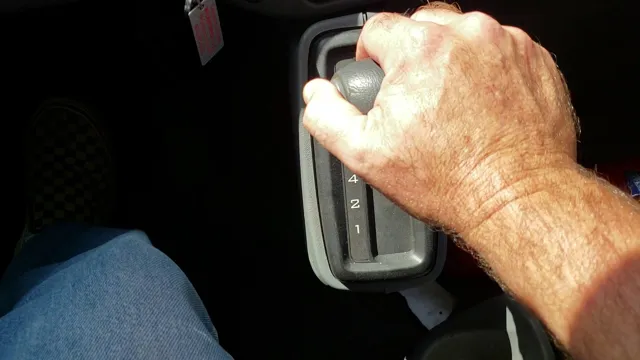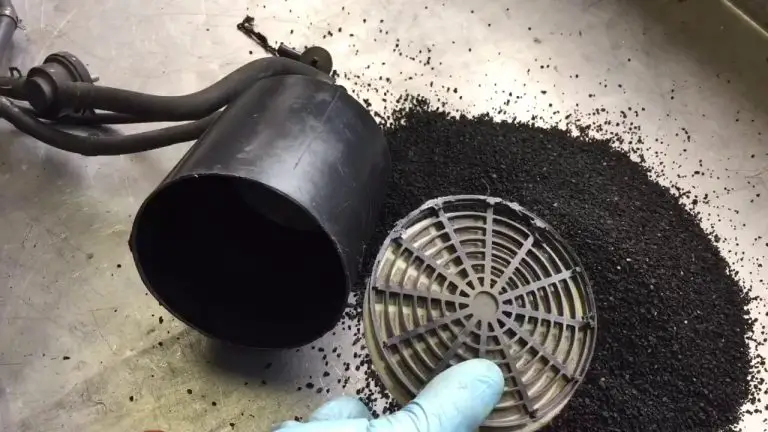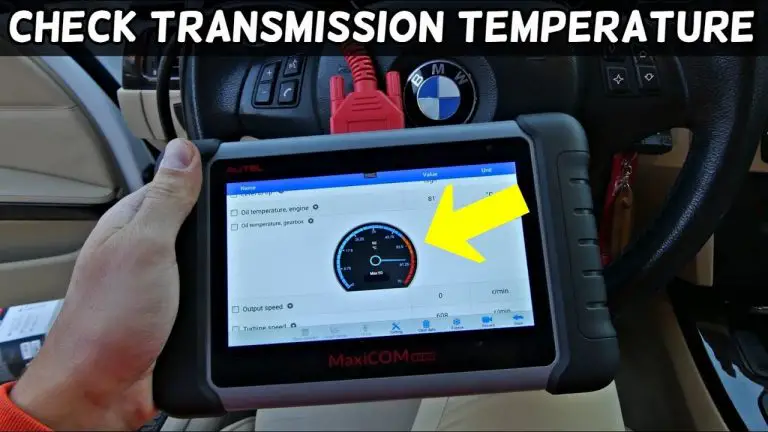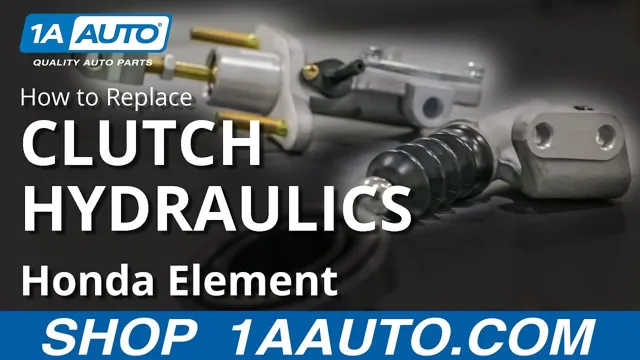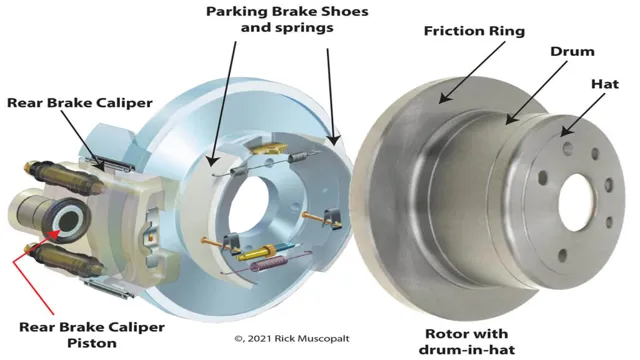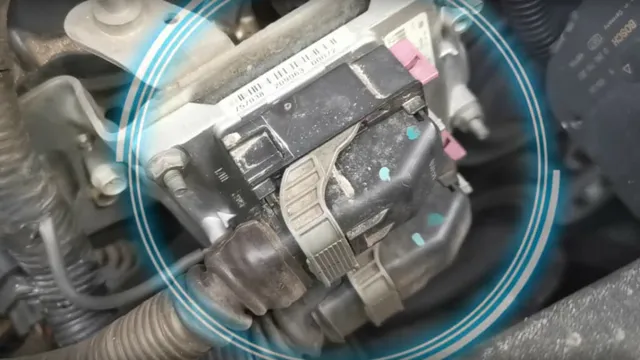Say Goodbye to Dents: A Complete Guide on Getting Dents Out of Your Truck Bed Wheel Well
If you’re the proud owner of a truck, there’s no denying how important it is to keep it looking its best. But, accidents happen, and dents in the bed wheel wells can put a damper on your vehicle’s appearance. Not only do they look unsightly, but they can also affect your truck’s value.
Fortunately, there are ways to fix these pesky dents without breaking the bank. Removing dents from truck bed wheel wells might seem like a daunting task, but it’s actually easier than you might think. With the right tools and proper technique, anyone can restore their truck’s appearance.
Whether you’re dealing with a minor dent or a larger one, we’ve got you covered. In this blog, we’ll discuss the different methods for removing dents from truck bed wheel wells. We’ll also provide step-by-step instructions, so you can tackle the job with confidence.
With our help, you’ll be able to restore your truck to its former glory in no time. So, let’s get started!
Gather Materials
If you’re wondering how to get dents out of your truck bed wheel well, the first step is to gather the necessary materials. You’ll need a heat gun, a rubber mallet, a block of wood, and a can of compressed air. Once you have these items, you can begin the dent removal process.
The heat gun is used to warm up the metal around the dent. This makes it more pliable and easier to manipulate. Then, you can use the rubber mallet and block of wood to gently tap the dent back into place.
If there are any remaining small dents or bulges, you can use the compressed air to push them out. It’s important to take your time and be patient during this process, as rushing could cause more damage. With the right tools and technique, you can get rid of those pesky dents and restore your truck’s appearance to its former glory.
Body hammer and dolly
When it comes to body hammer and dolly work, it’s important to gather all the necessary materials before beginning your project. This will not only ensure that you have everything you need to complete the job, but it will also save you time and frustration later on. The most essential tools for body hammer and dolly work include a hammer, a dolly, body filler, sandpaper, and a spray gun.
You may also need a welder, an angle grinder, and a compressor, depending on the extent of the damage you are repairing. It’s important to choose high-quality materials, especially when it comes to your hammer and dolly. Look for tools made from a durable metal, such as steel or brass, that can withstand repeated use without becoming damaged.
Consider the shape and size of the hammer and dolly as well. You want a hammer that is comfortable to hold and maneuver, and a dolly that is the right shape and size for the particular area of the car you are working on. Another important consideration when gathering materials for body hammer and dolly work is safety.
Make sure you have a pair of gloves, safety glasses, and a dust mask to protect yourself from debris and chemicals. And if you’re working with a welder or other power tools, be sure to read all safety instructions carefully and follow them exactly. By gathering all the necessary materials before beginning your body hammer and dolly project, you’ll be set up for success from the start.
Taking the time to choose high-quality tools and safety equipment will ensure that your repairs are done efficiently, effectively, and most importantly, safely.
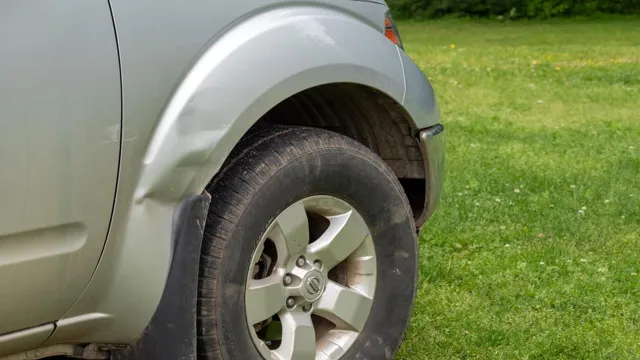
Rubber mallet
When it comes to assembling furniture, a rubber mallet is a must-have tool. Not only is it great for banging in dowels without damaging them, but it’s also ideal for tapping pieces into place without leaving unsightly marks. Luckily, a rubber mallet is a pretty straightforward tool to acquire.
You can typically find one at your local hardware store or online. When purchasing, make sure to choose one that has a sturdy rubber head with a comfortable grip. Some mallets even come with interchangeable heads of varying hardness, so you can use it for a variety of different tasks.
Overall, a rubber mallet is an essential addition to any DIY enthusiast’s toolbox. So, if you want a tool that will make your furniture assembly process quick and easy, a rubber mallet is definitely worth the investment.
Heat gun or hair dryer
When deciding between a heat gun or a hair dryer, it’s important to gather the right materials for the job. The first thing you’ll need is the right kind of heat gun or hair dryer for your specific task. Heat guns are typically used for heavy duty projects like stripping paint or wallpaper.
They can produce high heat and are designed to handle tough materials. On the other hand, hair dryers are better suited for lighter tasks like adding texture to hair or quickly drying small surfaces. Once you’ve chosen the right tool for the job, make sure you have the right safety equipment.
A heat gun can produce harmful fumes, so be sure to use it in a well-ventilated area and wear protective gear like gloves and goggles. A hair dryer doesn’t have the same risks, but it’s still a good idea to take necessary precautions. In addition to safety gear, you’ll also need the proper attachments for your tool.
A heat gun may come with a variety of nozzles and attachments for specific tasks, while a hair dryer may need a diffuser or concentrator to achieve the desired effect. By gathering all the necessary materials beforehand, you can ensure a successful and safe project with your heat gun or hair dryer.
Dry ice
Dry ice is an extremely useful and versatile substance that can be used for a variety of purposes. Before you start experimenting with it, however, it’s important to gather all the necessary materials. The most obvious thing you’ll need is dry ice itself, which can be purchased from many different sources, including ice distributors, grocery stores, and online retailers.
You’ll also need gloves to handle the dry ice safely, as well as a container to store it in. Other useful materials might include a hammer or mallet for breaking the dry ice into smaller pieces, a towel or other insulating material to help keep the dry ice cool, and a scale to measure out specific amounts of dry ice. Once you have everything you need, you’ll be ready to start experimenting with this powerful and fascinating substance.
Assess the Damage
When it comes to getting dents out of your truck bed wheel well, the first step is to assess the damage. Take a close look at the affected area and determine the severity of the dent. Is it a shallow dent with no creases, or is it a deep dent that’s left a noticeable crease on the surface? It’s important to be honest with yourself about the condition of the dent.
Some dents can be easily repaired with a little elbow grease, while others may require professional help. If the dent is shallow, you may be able to fix it yourself with a plunger or a vacuum cleaner. However, if the dent is deep or has caused structural damage, it’s best to take your truck to a professional auto body shop.
They have the tools and expertise needed to repair the dent correctly and ensure that your truck looks as good as new.
Check for cracks or creases
When assessing the damage to your car after an accident, it’s important to check for cracks or creases on the body. These can be a sign of structural damage that may have affected important components like the frame or suspension. Look closely for any visible signs of bending or twisting in the metal.
If you suspect there may be damage that isn’t immediately visible, take your car to a professional for a thorough inspection. Don’t overlook even minor issues as they can lead to more serious problems in the future. Being proactive in addressing any damage to your car can not only prevent future issues but also ensure the safety of yourself and others on the road.
Remember, safety should always come first, and taking the time to properly assess any damage to your car is a crucial step in ensuring it’s roadworthy.
Determine the dent depth and size
When assessing the damage to your car, one of the most crucial steps is determining the dent depth and size. This helps determine whether the damage can be repaired through simple methods like paintless dent removal or if a more serious approach is necessary. To determine the dent depth and size, you can use a variety of techniques such as shining a light onto the dent’s surface and measuring it with a ruler.
By doing this, you can get an idea of the severity of the damage and what kind of repair work might be required. It’s essential to accurately assess the damage as it can affect the overall value of your vehicle, and also impact safety if left unrepaired. So, don’t hesitate to seek the advice of a professional to ensure that you get an accurate assessment.
Remember that doing so can save you time, money, and keep you safe on the road.
Fixing the Dent
If you’re a truck owner, a dent in your truck bed wheel well can be an unfortunate and frustrating issue to deal with. Thankfully, there are a few methods you can use to get your truck bed looking like new again. One option is to use a plunger to pop the dent out from the inside of the wheel well.
This technique involves wetting the plunger, placing it over the dent, and then pulling it quickly and forcefully to create suction. Another option is to use a hair dryer or heat gun to gently warm up the dent, making the metal more malleable. Once the metal is heated, you can use a rubber mallet or wooden block to carefully tap the dent back into shape.
Whatever your preferred method is, just be sure to take your time and be careful not to cause additional damage to your truck. With a little patience and the right technique, you can easily get rid of those unsightly dents and restore your truck to its former beauty.
Hammer and dolly technique
The hammer and dolly technique is a method used to fix dents in a car’s bodywork. It involves using a hammer to tap out the dent from the inside while using a dolly to support the metal on the outside. This technique is often used in conjunction with body filler to create a smooth finish.
The hammer and dolly technique requires a skilled technician who can accurately identify the best place to hammer and the amount of force needed. It is a time-consuming process as the technician will need to repeatedly check the progress of the repair to ensure it is successful. However, with patience and attention to detail, the hammer and dolly technique can restore the bodywork of a car to its original condition, making it look as good as new.
So, if you have a dent in your car, don’t despair – there might just be a solution out there.
Using a rubber mallet
Have you ever had an unfortunate dent in your car? Did you know that you can fix it yourself with just a rubber mallet? It might sound too good to be true, but it’s actually a simple and effective method. To start, make sure that the dent isn’t too deep or large. If it is, it may not be fixable with just a rubber mallet.
Once you’ve determined that it’s a suitable size, find the center of the dent and place a block of wood behind it. This will prevent any further damage to your car. Next, take your rubber mallet and lightly tap the dent from the outside.
Start at the edges and work your way towards the center, using gentle and consistent tapping. This will gradually push the dent back into place. Be careful not to hit too hard or too fast, as this could cause more damage or create new dents.
With patience and persistence, you should be able to fix the dent without any additional cost or professional help. Remember, using a rubber mallet is only recommended for small, surface-level dents. If you’re unsure or struggling to fix the dent, it’s best to seek assistance from a professional.
Applying heat to the area
When it comes to fixing a dent on your vehicle, applying heat to the area is a common technique that can work wonders. The idea is to use a heat gun or hairdryer to soften the metal and make it easier to manipulate. Once the metal is warm enough, you can gently push and massage the dent back into shape, using a rubber mallet or even your hands to achieve the desired result.
It’s important to note that this method requires patience and a steady hand, as too much heat or force can cause further damage to your vehicle. Additionally, it’s always a good idea to use protective gear such as gloves and eye protection when working with any kind of tool or equipment. But with the right tools and techniques, applying heat to a dent can be an effective and affordable way to restore your vehicle’s appearance.
Using dry ice
Using dry ice to fix a car dent is a common method these days. This is because dry ice can help reduce the dent by contracting the metal. The first step in the process is to get the dry ice and wear some protective gloves to handle it.
You can then place the dry ice directly on the dent for several seconds. The ice will create a temperature difference between the metal and the dry ice, which will cause the metal to shrink and potentially pop back into place. However, you should be cautious as using too much dry ice can cause the metal to become brittle and crack.
Therefore, it’s crucial to use this method carefully, and if you’re unsure, it’s essential to take your car to a professional mechanic who can fix the dent without any risk. Overall, using dry ice to fix a car dent is an effective method with some limitations.
Preventative Measures for Future Dents
Getting dents out of your truck bed wheel well can be a hassle and costly, but there are preventative measures you can take to avoid dents in the first place. First and foremost, avoid carrying excessive weight that exceeds the weight capacity of your truck bed. Overloading your truck bed can cause stress on the wheel wells, leading to dents over time.
Secondly, consider investing in a spray-on bed liner or bed mat to protect your truck bed from scratches and dings. These protective materials can absorb impact and prevent dents from occurring. Lastly, drive cautiously on rough terrain and avoid hitting potholes or bumps at high speeds.
These types of impacts can cause serious damage to your truck bed, including dents. By taking these preventative measures, you can save time and money in the long run by avoiding the need for dent removal services.
Install fender flares
Installing fender flares on your vehicle can provide preventative measures for future dents. Dirt, rocks, and other debris kicked up by your tires can easily damage your car’s paint and bodywork. Fender flares create a barrier between your tires and the rest of the vehicle, reducing the amount of debris that can hit it.
They also add a stylish touch to your ride, making it look tougher and more rugged. Additionally, fender flares can provide extra coverage for wider tires, preventing rubbing against the bodywork and potential damage. Overall, installing fender flares is a simple yet effective way to protect your vehicle and give it an extra touch of style.
Apply a bedliner
When you apply a bedliner to your truck, you are taking an important preventative step towards avoiding future dents. A bedliner provides a barrier between your vehicle’s metal body and any cargo you may be hauling. Without this protective layer, your truck bed is susceptible to scratches, gouges, and dents that can compromise its integrity over time.
But with a bedliner in place, you can rest easy knowing that your cargo will not cause any damage to your vehicle. Think of it like wearing protective gear during contact sports. Just as a helmet and pads keep athletes safe from injury, a bedliner keeps your truck bed safe from damage.
Make sure you choose a high-quality bedliner that is designed to withstand heavy use, so you can enjoy dependable protection for years to come.
Use truck bed mats
Truck bed mats are an essential accessory that can prevent future dents, scratches, and damages to your vehicle. When you’re hauling cargo or goods, your truck bed is likely to take a beating. Without adequate protection, any sharp or heavy items could potentially scratch or dent your truck bed liner, leaving unattractive markings that lower the vehicle’s resale value.
Fortunately, truck bed mats are an ideal solution to prevent such damages from happening. The mats are made of heavy-duty materials like rubber or vinyl, which are tough enough to withstand heavy loads and impacts. Moreover, they are non-slip, so your cargo won’t slide around and cause scratches or dents.
Investing in a truck bed mat may help you avoid expensive repair and maintenance costs down the road. So, go ahead and get one, and extend the life of your truck bed while keeping it looking like new.
Conclusion
So there you have it, folks: the tried and true methods of getting those pesky dents out of your truck bed wheel wells. Whether you choose the plunger or the boiling water method, just remember to always be patient, persistent, and protective of your precious truck. And who knows, after mastering these techniques, maybe you’ll even become the neighborhood dent removal expert.
Just don’t forget to charge for your services – your time is valuable after all!”
FAQs
What are some tools required to fix dents in truck bed wheel wells?
Some tools required to fix dents in truck bed wheel wells include a heat gun, body filler, sandpaper, a hammer, and a dolly.
Can dents in truck bed wheel wells be fixed at home?
Yes, minor dents in truck bed wheel wells can be fixed at home with the right tools and techniques.
Is it necessary to remove the tire to fix dents in the truck bed wheel well?
It is not always necessary to remove the tire to fix dents in the truck bed wheel well, but it may be required for better access.
How much does it cost to fix dents in a truck bed wheel well?
The cost of fixing dents in a truck bed wheel well can vary depending on the severity of the damage and the professional doing the repair. It can range from a few hundred dollars to over a thousand dollars.

